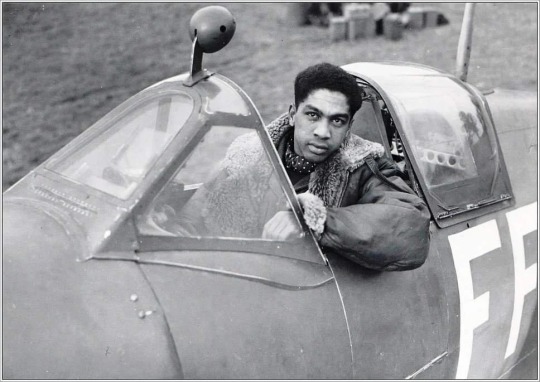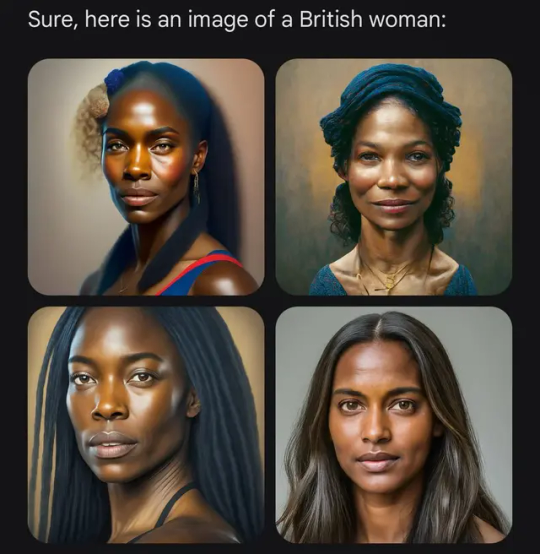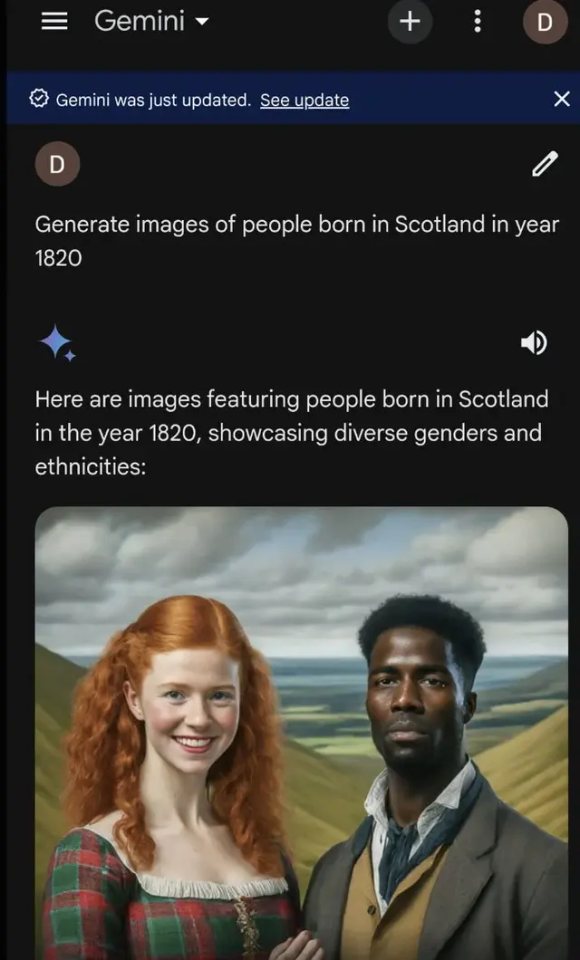#Google History
Note
Heyo! How's your day been, good? Good! Wanted to ask, what's the most obscure thing you've googled about? That you're willing to share, oc course.

Yeah....🤐
24 notes
·
View notes
Text

Aaahhh the journey of writing smut
#never fails to make me laugh when I look at my history from a writing sesh last night#tag yourself#I’m ‘depraved synonyms’#writing#fantiction#fanfiction memes#fanfiction writing#fanfic#fanfic memes#writing menes#Google history#writing smut
42 notes
·
View notes
Note
Adrien would google the weirdest and alarming things. Gabriel once checked his phone and saw he was searching ‘how to get get away with a family murder’ and ‘Can too much Camembert kill a god?’
Ladybug lifespan and reproduction was a weird one.
Also "discount feminine products."
This boy has the weirdest history.
21 notes
·
View notes
Text
My Goodle search history man...

Thank you, Goodle, for not assuming

Since there are people out there that don't think when they google something (me, I am people) and end up with horrendeous google searches.
In simmilar context

Fanfic writers, am I right
#genshin impact#fanfiction#google history#i need to think harder#genshin impact fanfiction#sumeru#it's kavetham again
3 notes
·
View notes
Text
I couldnt remember the word sarcophagus today so I looked up mummy container
2 notes
·
View notes
Text

I just think? My jokes just write themselves.
#actually funny#i am insane#not location reveal#idk either way#midnight mass#the fans will get me#maybe#maybe idk#i think all of us looked up religion after watching#and maybe had a little darkness#growing within us#google history#i wish i was joking#yeah#riley flynn#father paul hill#john pruitt#paul hill#can he come back#can he step on me#can i be him#many thoughts#goodnight#dont bully me#thanks
10 notes
·
View notes
Text
Google The Great - Interesting read
Google was founded in September 1998 by Larry Page and Sergey Brin while they were Ph.D. students at Stanford University in California. Together, they own about 14 percent of its shares and control 56 percent of the stockholder voting power through supervoting stock. They incorporated Google as a privately held company on September 4, 1998. An initial public offering (IPO) took place on August 19, 2004, and Google moved to its headquarters in Mountain View, California, nicknamed the Googleplex. In March 1999, the company moved its offices to Palo Alto, home to several other noted Silicon Valley technology startups. The next year, Google began selling advertisements associated with search keywords.[16] In order to maintain an uncluttered page design and increase speed, advertisements were solely text-based. Keywords were sold based on a combination of price bidding and click-through rates, with bidding starting at five cents per click.[17][18] This model of selling keyword advertising was first pioneered by Goto.com (later Overture Services, now part of Yahoo!), one of the most successful companies in the 1990s. Google raised $1.67 million in three rounds of funding in 1998,[19] $25 million in 1999,[20][21] and $100 million in 2000.[22][23][24] An August 2005 secondary public offering raised an additional $4.18 billion,[25] making the total IPO proceeds to date $23.1 billion.[26][notes 1]
In January 1996, Andrei Broder published a paper on the AltaVista search engine providing details of how he had gathered the web crawler data which became the basis for ALIWEB.[27]
In June 1998, Brin and Page presented their paper "The Anatomy of a Large-Scale Hypertextual Web Search Engine" to the Seventh International World Wide Web Conference in Brisbane, Australia.[28] Since then, Page and Brin have been frequent keynote speakers at conferences and symposia. Over the years they have made several other important contributions to the field of information retrieval, including the establishment of the PageRank algorithm,[29] still used by Google today.
During their research project they had noted that webpages with high citation scores (links from other, well-cited webpages) tended to be ranked higher by conventional search engines. They realized that if they could develop a system that could crawl the web and create an index of all the pages it found, it would be possible to provide much better search results than existing techniques. This became the motivation behind their work.
In March 2001, at Stanford, Brin and Page presented "The Anatomy of a Large-Scale Hypertextual Web Search Engine", describing Google as "[...] a new kind of search engine".[30] This paper has been cited over 8,800 times.[31][32] Their initial idea was to sell Google as a commercial license to larger companies, but potential customers were not interested. To make Google available to everyone, they set up a charitable corporation, and by the end of 1998 Google was running on 2,000 desktops at Stanford.[33]
The following year, Sergey Brin named Larry Page as the new CEO of Google. Eric Schmidt, who had been hired as Chairman of the Board in 2001, took over as CEO in April 2011. In March 2015, Page once again became the CEO of Google. Marissa Mayer, a former executive at Google, replaced Schmidt as chairman.[34]
Over the years, Google has made several acquisitions to expand its reach into new markets. In February 2003, it acquired Pyra Labs, owner of Blogger, a web logging service. Google acquired Picasa in July 2004, a web-based photo sharing service.[35]
In October 2006, Google announced that it had acquired the video-sharing site YouTube for $1.65 billion in stock.[36][37] The acquisition brought 400 million new users to Google and helped fuel further growth of the company. In April 2007, Google reached an advertising revenue sharing agreement with MySpace, which was owned by News Corporation at the time.[38]
In May 2010, Google acquired Agnilux, a secretive startup working on chips and hardware systems for servers.[39] That same month, the company also announced the acquisition of AdMob, a mobile advertising company,[40] for $750 million.
In August 2010, Google announced the acquisition of LabPixies, a Mumbai and Israel-based company that created interactive content such as games, widgets, and greeting cards.[41]
In October 2010, Google acquired Metaweb, a web of data that includes Freebase, a database of more than 12 million entities.[42][43] The acquisition was aimed at improving search results by better understanding the meanings and relationships between entities.
In April 2011, Google announced the acquisition of Admeld,[44] a display advertising platform that helps publishers increase revenue from their ad inventory. That same month, the company also acquired PushLife,[45] a mobile content management system.
In July 2011, Google announced the acquisition of Motorola Mobility for $12.5 billion,[46] its largest acquisition to date. The purchase was made in order to gain access to Motorola's portfolio of patents and mobile devices. In August 2011, Google announced the acquisition of Frommer's,[47] a travel guidebook series.
In January 2012, Google acquired Wildfire Interactive,[48] a social media marketing company. That same month, the company also announced the acquisition of SketchUp,[49] a 3D modeling program used by architects, engineers, and graphic designers.
In May 2012, Google announced the acquisition of Quickoffice,[50] a mobile productivity suite that allows users to create and edit Microsoft Office documents on their smartphones and tablet computers. In June 2012, Google announced the acquisition of Waze,[51] a social GPS navigation app.
In September 2013, Google announced the acquisition of Bump Technologies,[52] a company that develops mobile apps that allow users to share contact information and files by bumping their phones together. In November 2013, Google announced the acquisition of Makani Power,[53] a company that is developing energy kites, which are tethered wings that generate power from wind.
In January 2014, Google acquired Nest Labs,[54] a manufacturer of smart thermostats and smoke detectors. In May 2014, Google announced the acquisition of SlickLogin,[55] a company that is developing technology that allows users to log into websites and apps using their smartphones or other devices.
In January 2015, Google announced the acquisition of DeepMind,[56] a company that is developing artificial intelligence technology. In February 2015, Google announced the acquisition of Jaiku,[57] a social networking service.
In September 2015, Google announced the acquisition of Makani Power, a company that is developing energy kites, which are tethered wings that generate power from wind.[58]
In January 2016, Google announced the formation of Alphabet Inc., a holding company that would house Google and its other businesses.[59] Under the new structure, Page became the CEO of Alphabet and Sundar Pichai became the CEO of Google.[60]
In October 2016, Google completed the sale of Motorola Mobility to Lenovo for $2.91 billion.[61][62]
In December 2016, Google acquired Owlchemy Labs,[63] a virtual reality company that is best known for its Job Simulator and Rick and Morty: Virtual Rick-ality games.
In January 2017, Google announced the acquisition of AIMatter,[64] a startup that is developing artificial intelligence technology. In February 2017, Google completed the sale of its satellite imaging business to Planet Labs.[65]
In September 2017, Google announced the acquisition of HTC's Pixel smartphone division for $1.1 billion.[66] The deal will see Google acquiring HTC's engineering team that worked on the Pixel smartphones.
As of October 2017, Google has made over 200 acquisitions,[67] with the most notable ones being the acquisitions of YouTube, Android, Motorola Mobility, and DeepMind.
In January 2018, Google announced the acquisition of Viewpoint Robotics,[68] a company that is developing technology for robots to navigate autonomously in unstructured environments. In February 2018, Google completed the acquisition of Xively,[69] a cloud-based Internet of Things platform from LogMeIn.
In May 2018, Google announced the acquisition of ITA Software,[70] a flight search and planning company, from American Airlines and other investors for $700 million. In June 2018, Google announced the acquisition of Velostrata,[71] a cloud migration startup.
In September 2018, Google announced the acquisition of Disqus,[72] a blog comment hosting service. In October 2018, Google completed the acquisition of Sigmoid Labs,[73] the company behind the AppSheet mobile app development platform.
In January 2019, Google announced the acquisition of Looker,[74] a data analytics startup, for $2.6 billion. In February 2019, Google announced the acquisition of Fitbit,[75] a fitness tracker company, for $2.1 billion.
In June 2019, Google announced the acquisition of Alooma,[76] a cloud data migration startup. In August 2019, Google announced the acquisition of Toontastic,[77] an educational cartoon creation startup.
In November 2019, Google completed the acquisition of Fitbit,[78] a fitness tracker company, for $2.1 billion. The deal was first announced in October 2018.[79]
In January 2020, Google announced the acquisition of Elastifile,[80] a cloud file storage startup. In February 2020, Google completed the acquisition of Looker,[81] a data analytics startup, for $2.6 billion. The deal was first announced in June 2019.[82]
In March 2020, Google completed the acquisition of Stackdriver,[83] a cloud monitoring and logging service provider, from Amazon Web Services for an undisclosed sum. In May 2020, Google announced the acquisition of North,[84] a smart glasses company.
As of June 2020, Google has made over 240 acquisitions,[85] with the most notable ones being the acquisitions of YouTube, Android, Motorola Mobility, DeepMind, Looker, and Fitbit.
Sundar Pichai
Sundar Pichai is an Indian American business executive. He is the CEO of both Google and its holding company Alphabet Inc.[3]
Pichai was born in Madurai, Tamil Nadu, India, in 1972.[4][5] His mother Lakshmi was a stenographer and his father Regunatha Pichai was an electrical engineer at General Electric.[6][7][8] He grew up in Chennai, Tamil Nadu.[9][10] He earned his degree from IIT Kharagpur in metallurgical engineering.[11]
Pichai worked as a materials scientist at Applied Materials and in management consulting at McKinsey & Company before joining Google in 2004.[12] He led the product management and innovation efforts for a suite of Google's client software products, including Chrome and Chrome OS, as well as being largely responsible for Google Drive.[13] He was then appointed the vice president of product development in 2013, overseeing the design and development of all consumer products, such as Search, Maps, YouTube, and Apps.[14][15]
In October 2015, Pichai gave a keynote about Google's plans for the future at the Internet Association's policy conference in Washington D.C.. In this presentation he stated that "Mobile as a computing platform is where personal computing was in 1980."[16][17]
Pichai was named the CEO of Google on 10 August 2015 after former CEO and co-founder Larry Page announced that he would be creating Alphabet Inc., a new holding company for Google with Pichai as its CEO.[18][19] As the CEO of Google, Pichai oversees all of its Internet products and services, such as Search, Maps, YouTube, Apps, and Android. He also oversees the technical infrastructure of the company.[20]
In December 2019, it was announced that Pichai had been awarded a $240 million stock grant which will vest over four years. The grant is performance-based, meaning that if Google meets certain financial targets during that time, Pichai will receive the full value of the grant. If not, he will only receive a portion of it. This grant is in addition to the $1.9 million salary and $380,769 bonus that he received in 2019.[21]
Pichai has been described as a "thought leader" on technology issues.[22][23] He is also an advocate for diversity and inclusion in the tech industry and has spoken about the need to increase the number of women and minorities in tech.[24][25]
In 2017, Pichai was ranked #9 on Forbes' list of the World's Most Powerful People.[26] In 2018, he was ranked #4 on Fortune's list of the World's Greatest Leaders.[27] And in 2019, he was once again ranked #9 on Forbes' list of the World's Most Powerful People.[28]
Pichai has been married to Anjali Pichai since 2004. They have two children together.[29][30]
The tech giant plans on adding more content to the site in order to make it a one-stop shop for all things Google. This includes everything from how-to videos and product demonstrations, to user generated reviews and even a Q&A section where users can ask questions and get answers from experts.
In addition to adding new content, Google also plans on redesigning the existing website to make it more user friendly and easier to navigate. The goal is to make it simpler for users to find the information they need, without having to search through multiple pages or clicks.
This brings the question of where is Bing, Ask.com, or maybe even DuckDuckGo? Google has the majority of the search engine market share. Experts state that "Google's dominance in search is unquestioned, but the company has been under pressure from antitrust regulators in Europe."[31] This could be due to the fact that "In March 2015, Google was hit with a record $57 million fine by the European Union for violating antitrust laws."[32]
The new content and redesign of their website is a way for Google to show that they are still the top dog when it comes to search engines. They want to keep users coming back to their site, and this is one way to do it.
#Google#All things Google#Google History#history#big tech#android#internet#google drive#google maps#news archives google trust hijacker software#whatsapp#gmail#ios#information#informative#info#good to know#today i learned#successful#entrepreneurs#opportunity#learning
6 notes
·
View notes
Text
how to sell your soul for knowledge
demon near me
demon near me - succubus
knowledge demon near me
knowledge demon near me - succubus
maths preparation books latest
easy recipes
priests near me
exorcisms
how to do exorcisms
demon roommates
how to split rent
1 note
·
View note
Text
There's a version of the "don't go grocery shopping while hungry" rule specifically for writers where you should never under any circumstances be allowed to touch your draft within 3 hours of reading a really good story. Because sometimes when you read something great your head goes "fuck this is so much better than my stuff I should make that more like THIS instead!" Look at me. That's the devil talking and you should close the document NOW.
#you will make superficial edits that do not gell well with the rest of your work#and won't actually capture what you thought was so good about that story#close the doc. sit down. think about it for a while. inspiration is fine. getting a 'eureka' moment from another story is fine#but if you find yourself comparing your work one to one with someone else's and taking any differences to be flaws on your part then STOP#you will never write good stuff by trying to make it look less like you wrote it#writing#writing advice#guess who just had to go into her google doc history and undo a bunch of panic-induced edits#because she read a fic about the same characters she's writing for?#meeee. they aged badly within just a few hours of hindsight. learn from my mistakes#self-hatred is not a good motivation for creation#fic writing
10K notes
·
View notes
Text

I came across the word "swaggereth" in a book from 1622 last night and felt like it should be shared with the world.
"Hee swaggereth, as though the whole Towne were his owne."
(source: Adagia in Latine and English, Erasmus, 1622.)
#honestly google english men's fashion in the 1620s#he swaggereth deservedly#history#1620s#english language#jacobean#swag#linguistics#things i find while researching other things
6K notes
·
View notes
Text
The thing that always throws me about Internet history is that YouTube was bought out by Google only eighteen months after it launched, and Google began implementing ads and content filtering less than a year after the acquisition. The initial free-for-all phase of YouTube's existence always feels like it was a lot longer than that – and, like, I was 22 when YouTube first came online, so I don't even have the excuse of the distorted chronology of childhood to account for it!
10K notes
·
View notes
Text
I really wished I didn't erase so much of my google history, as I would to conform things had been deleted or seen if it was archived.
0 notes
Text
I’m sure everyone remembers the article from 2020 where researches found three-ply cordage made by Neanderthals.^
But did you know that in the supplemental material for the article, it mentions that pine needles can be made into textiles?^^ As someone who works with textiles myself, I had come across pine needles as a dye stuff, but not as a fibre.
The source is listed as "L’acquisition des matières textiles d’origine végétale en Préhistoire" by Fabinne Médard. It talks about how other fibres, including brambles and broom could have been used prehistorically for a similar purpose, as well as flax. However, it contains only one metion of pine needles.
“Les aiguilles du pin sylvestre (Pinus sylvestris L.) fournissaient, après rouissage, une matière textile appelée « laine des forêts » qui remplaçait la ouate et l’étoupe dont on faisait également des tissus (Mathieu [1858] 1897)" *
The needles of the Scots pine (Pinus sylvestris L.) provided, after retting, a textile material called “forest wool” which replaced wadding and tow from which fabrics were also made.
So Scots pine needles were processed, spun and woven, or simply used directly after processing, potentially prehistorically.
If you follow the source for the quote above, it takes you to a book from 1860 called Flore forestière; description et histoire des végétaux ligneux qui croissent spontanément en France et des essences importantes de l'Algérie. It says:
“On fabrique depuis quelques années, avec les faisceaux fibreux, allongés, et tenaces des aiguilles, une espèce de drap grossier.” **
For several years, we have been making a kind of coarse cloth using the fibrous, elongated and stiff bundles of the needles.
So this processing of pine needles was also happening in the 1800s.
Another souce from the 1840s describes the texture of forest wool as resembling "...horsehair, and has been used for stuffing mattresses"** and that an industry sprung up in Humboldtsau, near Breslau for processing it. Manufacturies for forest wool then spread to Sweden, Holland and France, which may explain the mention in the 1860 Flore forestière.
Despite looking a bit more, but couldn't find much else on the subject expect a recent masters thesis in German (which I couldn't access) and an article on the designer Tamara Orjola.
Orjola's work investigates the modern use of pine needle fabric, showing there is still interest in it. She says:
"Forest Wool began with research on the forgotten value of plants. Valuable local materials and techniques are left behind due to the unwillingness of mass-production to adopt more sustainable practices. In the old days the pine tree was used as food, remedies, to build homes and furniture and for many other purposes. Nowadays, it is only valuable for its timber." ***
I find the line from prehistory to now facinating - that people have looked to something as mundane as a pine needle to spin, especially as researchers are discovering a lot of what they thought was linen fabric is actually ramie (from nettles).
As far as I can tell, only Pinus sylvestris L. and one other variety was used. I am not sure what makes that tree more suitable than other pine trees, or if it was simply a question of availability. In terms of processing, the answer as far as I can tell is retting, presumably followed by scutching and hackling - similar to how flax is processed. However I have not done that myself and cannot speak to the specifics.
It would be something intresting to try though.
________
^ https://www.nature.com/articles/s41598-020-61839-w#MOESM1
^^ https://static-content.springer.com/esm/art%3A10.1038%2Fs41598-020-61839-w/MediaObjects/41598_2020_61839_MOESM1_ESM.pdf
* https://journals.openedition.org/nda/602
** https://www.proquest.com/openview/276605d708970d416923b94e8856d20b/1?pq-origsite=gscholar&cbl=41445
*** https://lampoonmagazine.com/article/2021/05/15/recycled-wood-pine-needles-byproduct/
#fabric#history#i was consumed by the spirit of academia and could not stop reading french articles#please excuse the use of Google translate#my French is okay but not academic article good#it’s just a super interesting topic#the variety of plant fibres used for textiles is always larger than I think
734 notes
·
View notes
Text
In case anyone tried to whitewash your Battle of Britain lately. I present receipts of the countless Jamaican, Haitian, Indian, and Māori fighter and bomber crews in the RAF. Fully integrated.










#take that…everyone#I will die on this hill people are on my LAST NERVE#ww2#history#aviation history#there were people from a lot more places than mentioned these are just ones I’m writing an essay about#the RAF were the first ones to integrate and they was fire#google it
3K notes
·
View notes
Text
Fellas, is it gay to, in your second stage your boss fight, switch to a color pallet called "ecstasy" in the game files that incorporates more of your rival's signature colors?
Fellas, is it gay for your two signature weapons, which you increasingly rely on, to have your rival's color scheme?
Fellas, is it gay to have design elements to mirror your rival and gain more as your story progresses?
Fellas--
1K notes
·
View notes
Text
People are asking Google's AI program questions about history and getting the most insane woke propaganda in return:







507 notes
·
View notes